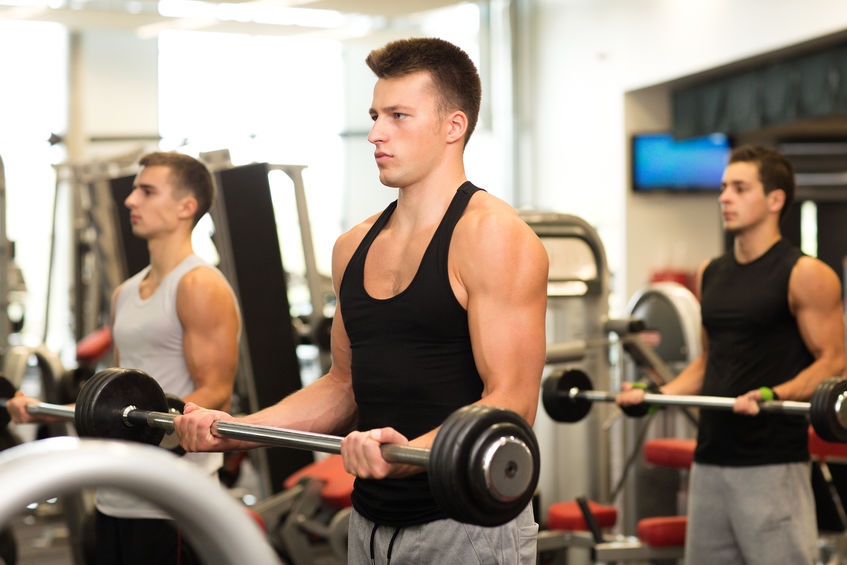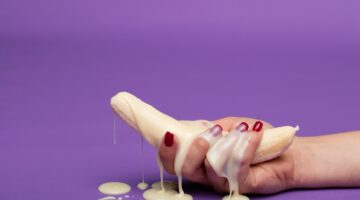Exercise Can Help Prevent and Treat Erectile Dysfunction
February 8, 2019 by Justin Lehmiller
Erectile dysfunction or ED is one of the most common sexual difficulties experienced by men. As with most sexual difficulties, there are numerous potential causes, including some that are biological, psychological, and social. However, a growing amount of research suggests that, in many cases, ED is a function of lifestyle. Moreover, simply by getting more exercise, men may be able to reduce their risk of developing ED and resolve existing erectile problems at the same time.
As evidence of this, consider a 2015 study published in the Journal of Sexual Medicine that examined how the physical activity levels of 295 men were related to their erectile function [1]. The group of men studied was diverse with respect to race (32% of the men were Black) and had an average age was 62.
Participants were categorized into one of four groups depending upon how much exercise they reported getting each week. The groups were as follows: sedentary (<3 MET hours per week), mildly active (3-8.9 MET hours per week), moderately active (9-17.9 MET hours per week), and highly active (>=18 MET hours per week). MET stands for “metabolic equivalent of task,” which is a calculation that takes into account not just the amount of time spent on exercise, but also the intensity of the activity. The goal here was to take all of the different exercises people might do and put them on a standardized scale.
Participants completed a sexual health questionnaire, too, which asked about the quality and frequency of their erections, their ability to reach orgasm, and their overall sexual function. Answers to all of these items were used as a global measure of erectile/sexual function and the possible range of values went from 0 to 100.
It turned out that the men who exercised the most—that is, those who were in the “highly active” category—had the highest sexual functioning scores. Specifically, their average score was 70 out of 100. What exactly counts as being “highly active?” There are a lot of different ways to get there, but in general, it would take about 2 hours per week of strenuous exercise or 6 hours per week of light exercise to fall into this category.
Erectile function was substantially better for the highly active men compared to the sedentary men. In fact, there was a difference of 17.9 points between the groups on their sexual function scores. This difference was statistically significant and it did not depend on race, meaning that both Black and White participants reported better sexual functioning to the extent that they got more exercise.
Men in the moderately active group seemed to score higher on erectile function than the sedentary group; however, the difference there was 8.1 points, which was not statistically significant. In other words, it was really only high (not moderate) activity levels that were linked to better sexual functioning.
One limitation of this study is that it was correlational, which means we cannot assume that exercise necessarily improves men’s sexual functioning. An alternative explanation is that perhaps men who are healthier in general (sexually and otherwise) are just more capable of exercise.
Importantly, however, scientists have actually performed randomized, controlled trials demonstrating that physical activity does indeed improve erectile functioning. For example, in a 2013 study also published in the Journal of Sexual Medicine, researchers found that men who were assigned to get a high volume of moderate intensity exercise demonstrated significantly greater improvement in their erectile functioning than men who got a lower volume of exercise [2].
A 2017 meta-analysis of the research in this area supports these findings [3]: researchers pooled the results of 7 studies in which men who had been diagnosed with erectile dysfunction were assigned to either an intervention (i.e., exercise) or control group. Overall, exercise was linked to improvements in erectile function, and this was true in both the short-term and long-term, with follow-up assessments ranging from 8 weeks to 2 years across studies. This meta-analysis concluded that “physical activity and exercise interventions improve patient-reported erectile dysfunction, particularly aerobic exercise with moderate-to-vigorous intensity.”
What all of this tells us is that exercise has a causal effect on men’s sexual functioning. This suggests that for men who are concerned about their erectile health, paying closer attention to one’s lifestyle could potentially help prevent erectile problems from developing in the first place, as well as reverse existing problems.
Want to learn more about Sex and Psychology ? Click here for previous articles or follow the blog on Facebook (facebook.com/psychologyofsex), Twitter (@JustinLehmiller), or Reddit (reddit.com/r/psychologyofsex) to receive updates. You can also follow Dr. Lehmiller on YouTube and Instagram.
[1] Simon, R. M., Howard, L., Zapata, D., Frank, J., Freedland, S. J., & Vidal, A. C. (2015). The association of exercise with both erectile and sexual function in black and white men. The Journal of Sexual Medicine, 12(5), 1202-1210.
[2] Khoo, J., Tian, H. H., Tan, B., Chew, K., Ng, C. S., Leong, D., … & Chen, R. Y. T. (2013). Comparing effects of low‐and high‐volume moderate‐intensity exercise on sexual function and testosterone in obese men. The Journal of Sexual Medicine, 10(7), 1823-1832.
[3] Silva, A. B., Sousa, N., Azevedo, L. F., & Martins, C. (2017). Physical activity and exercise for erectile dysfunction: systematic review and meta-analysis. British Journal of Sports Medicine, 51(19), 1419-1424.
Image Source: 123RF/dolgachov
You Might Also Like:

Dr. Justin Lehmiller
Founder & Owner of Sex and PsychologyDr. Justin Lehmiller is a social psychologist and Research Fellow at The Kinsey Institute. He runs the Sex and Psychology blog and podcast and is author of the popular book Tell Me What You Want. Dr. Lehmiller is an award-winning educator, and a prolific researcher who has published more than 50 academic works.
Read full bio >


